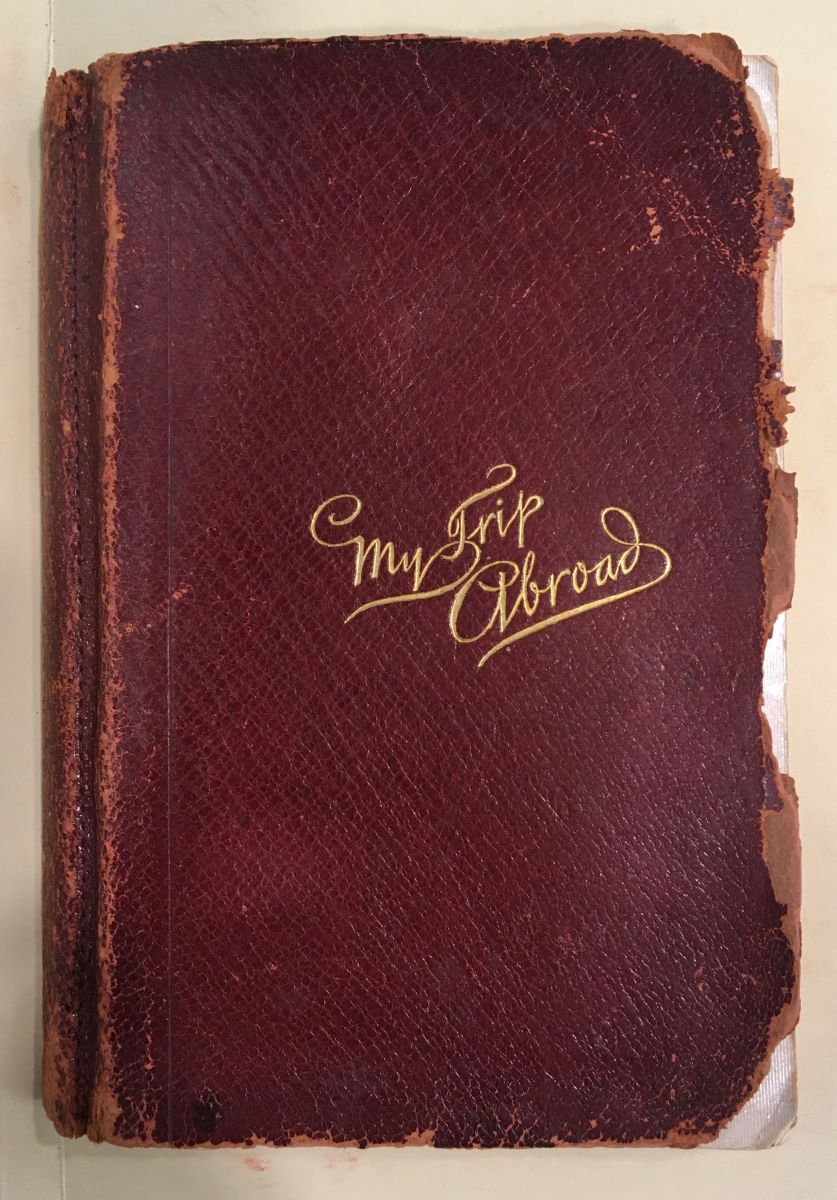 Anne P. Warner's diary, 1908
Anne P. Warner's diary, 1908Brielle Popolla, M.A. student in History and SCRC Graduate Apprentice, shares an early twentieth-century travel account and compares it to a trip of her own. Read on to learn more about Brielle's must-see itinerary for Florence, Italy.
From January to April 1908, 31-year-old Anne P. Warner traveled across Europe with some friends. Along the way, they made stops at Rome, Paris, Venice, Milan, Naples, Nice, and Cologne, among others. Anne Warner kept a detailed record of her trip in her 150-page diary, which forms part of Special Collections’ Warner Family Papers (Mss. Acc. 2010.251).
In an entry from February 1908, she writes about a weekend stay in Florence, Italy. The group ventured to Piazzale Michelangelo with its breathtaking view of the city; to the Piazza del Duomo to admire the Gates of Paradise and the impressive Duomo; to the church of San Lorenzo, home to the Medici family tombs; to the frescoes of Fra Angelico at San Marco; and to the Uffizi Gallery, “where many of the finest paintings in Europe are held.”
By all accounts, it was a lovely trip in a beautiful city. But Anne and her friends missed a crucial part of Florence: Basilica di Santa Croce, also known as the Temple of Italian Glories.
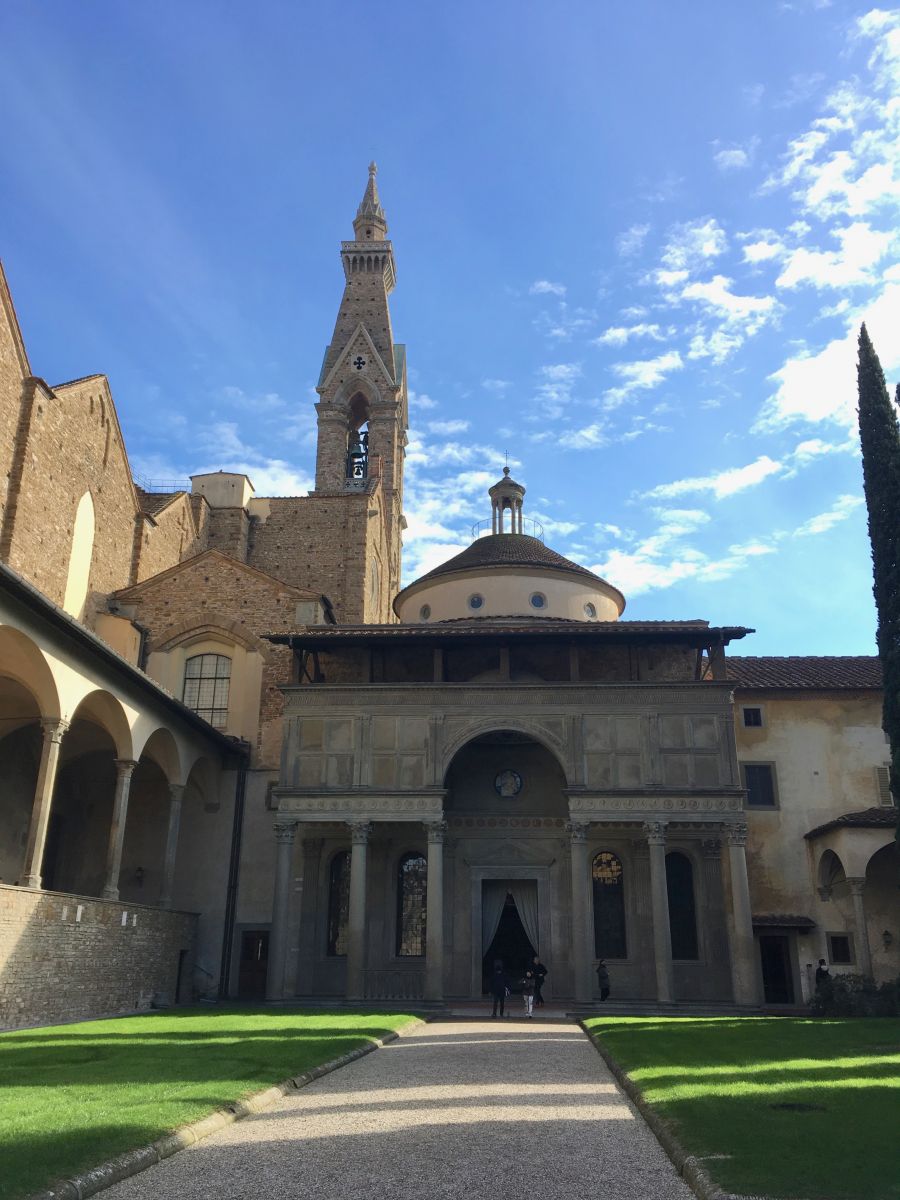 Cloisters inside Santa Croce. Photo courtesy of author.
Cloisters inside Santa Croce. Photo courtesy of author.This magnificent church, imposing and alluring in its unique way, is only half a mile away from the Duomo. Santa Croce’s famous burials are its main claim to fame—Michelangelo, Galileo, Machiavelli, and Gioacchino Rossini are but a few of the more notable people buried at this site. The basilica is also home to many works from famous artists. On display at Santa Croce is Donatello’s Crucifix and Annunciation sculptures, Giotto’s frescoes of Saint Francis, Cimabue’s wooden Crucifix, and Bronzino’s Descent of Christ into Limbo.
Santa Croce boasts architectural features designed by Brunelleschi and Arnolfo di Cambio, who was also the architect of the Duomo in the city’s center. The church has two sculptures dedicated to Dante, one of which is an empty tomb, as he was buried in Ravenna, Italy where he was exiled in the 14th century.
Santa Croce has much more to offer its guests and is a worthwhile stop for anyone traveling in Florence. Anne Warner’s trip sounds magnificent, but it is the (biased) opinion of this author that the trip was incomplete without a visit to Santa Croce.
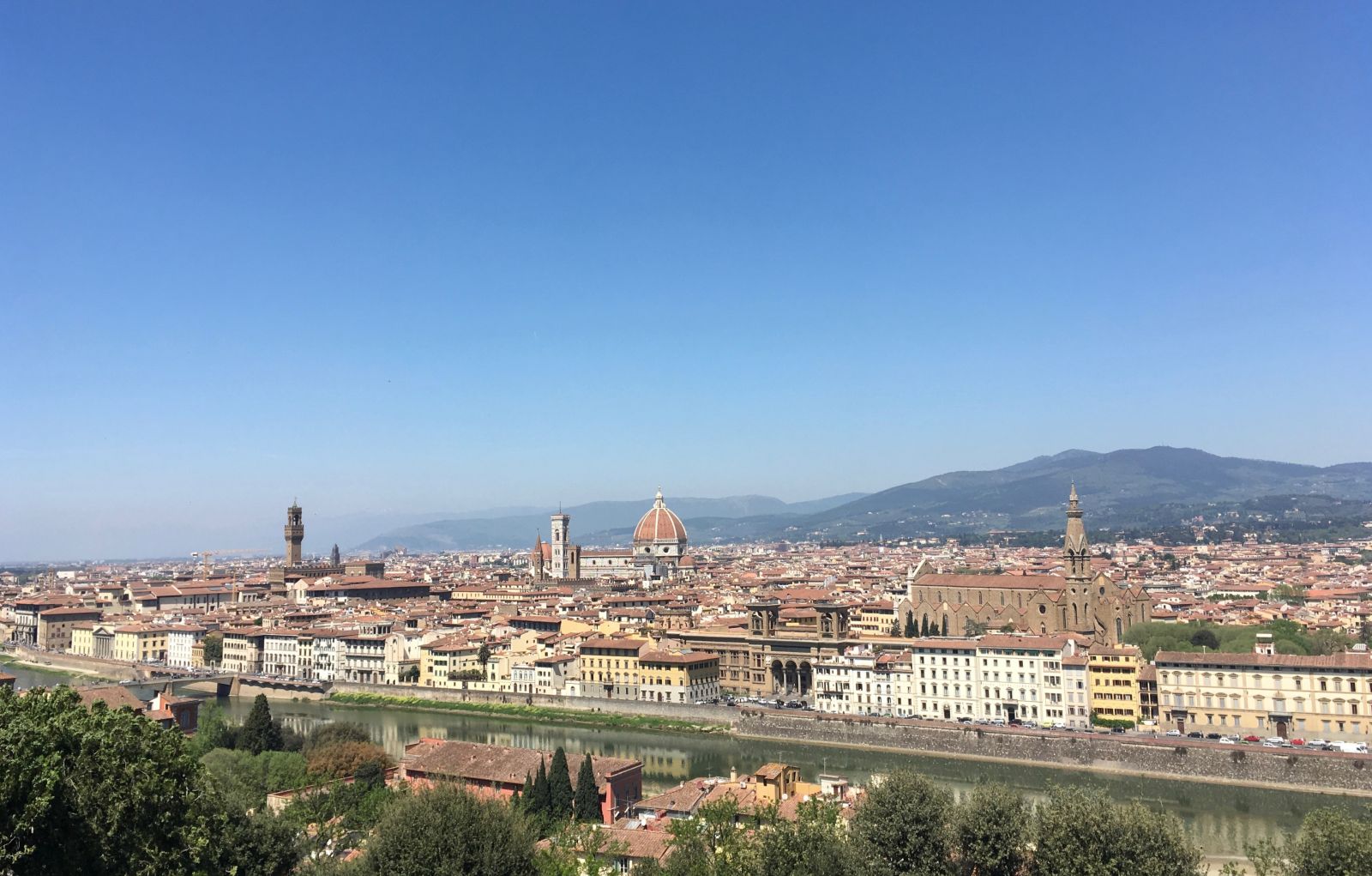 View from Piazzale Michelangelo. The Duomo is on the left and Santa Croce is the large brown church to the right. Photo courtesy of author.
View from Piazzale Michelangelo. The Duomo is on the left and Santa Croce is the large brown church to the right. Photo courtesy of author.
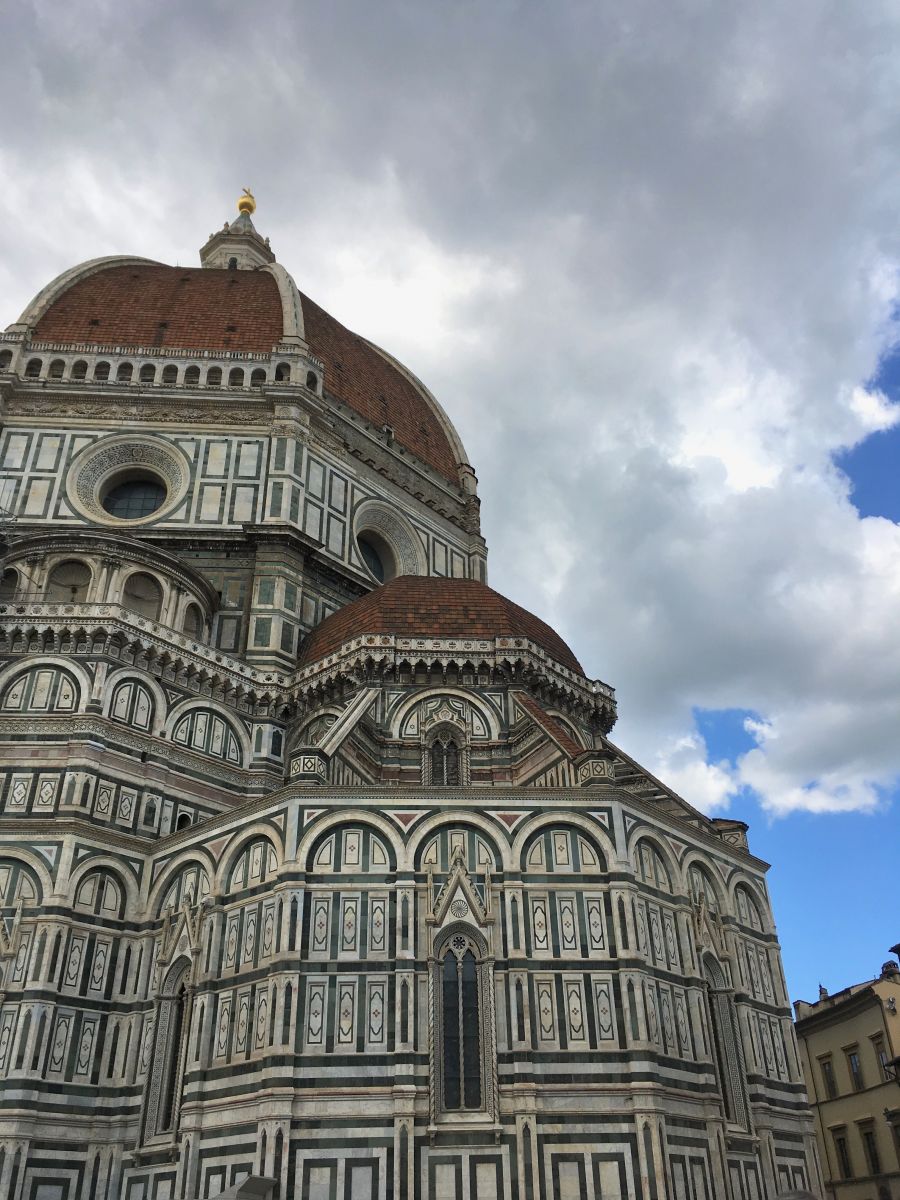 The Duomo. Photo courtesy of author.
The Duomo. Photo courtesy of author.
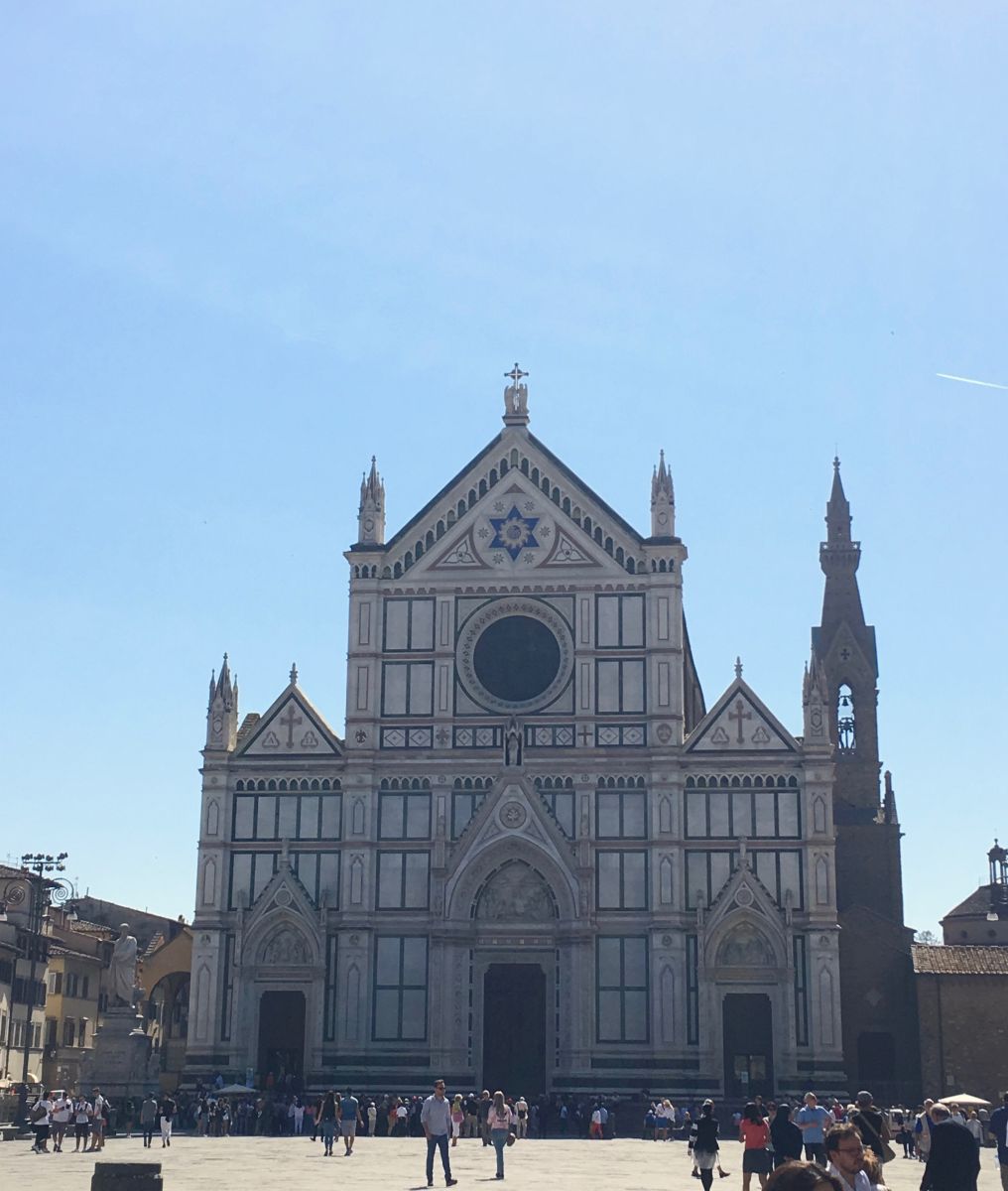 Façade of Santa Croce. Photo courtesy of author.
Façade of Santa Croce. Photo courtesy of author.
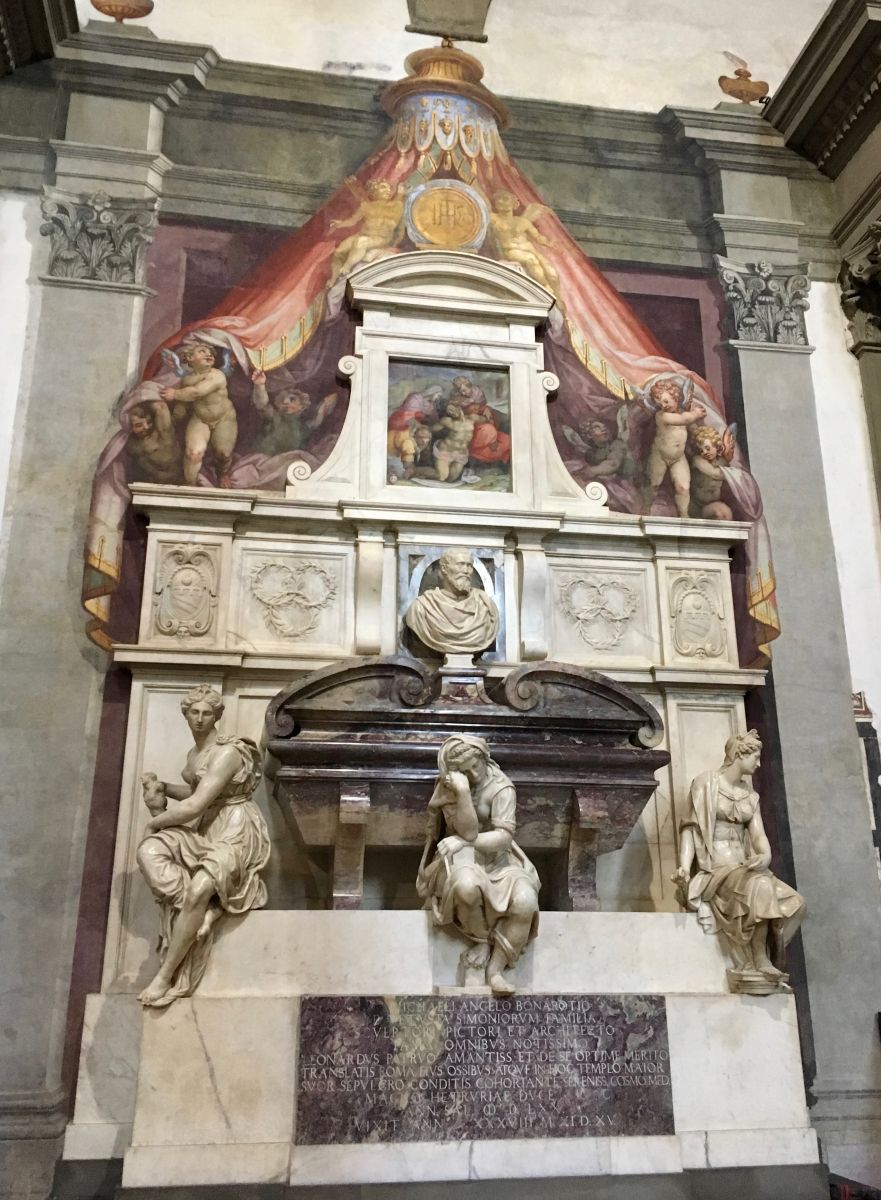 Michelangelo’s tomb inside Santa Croce. Photo courtesy of author.
Michelangelo’s tomb inside Santa Croce. Photo courtesy of author.
References and More to Explore:
Finding aid for Anne P. Warner's diary in the Warner Family Papers (Mss. Acc. 2010.251).
Learn more about the history, art, and architecture of Santa Croce, Florence, Italy.